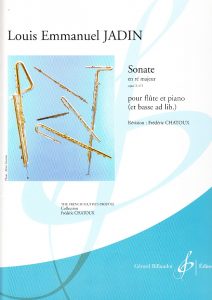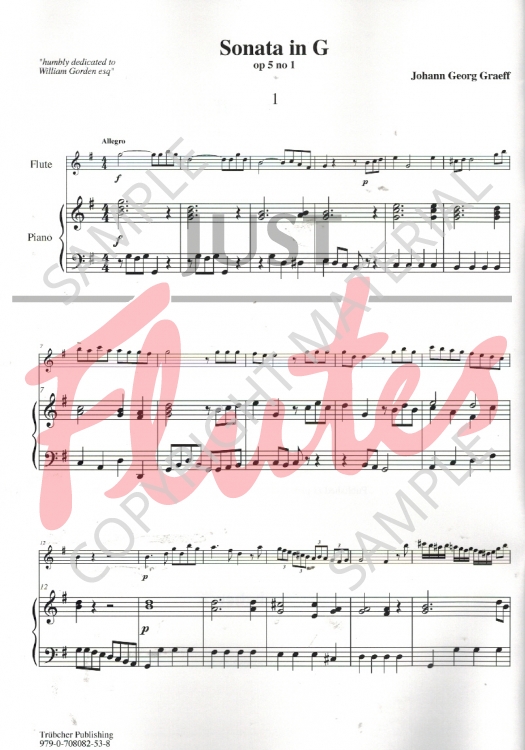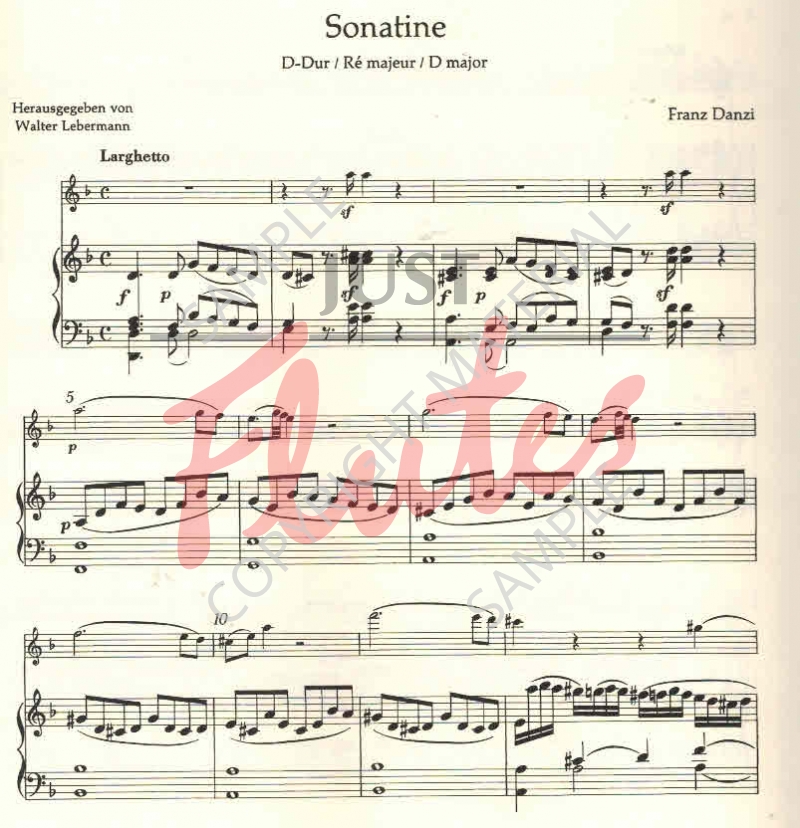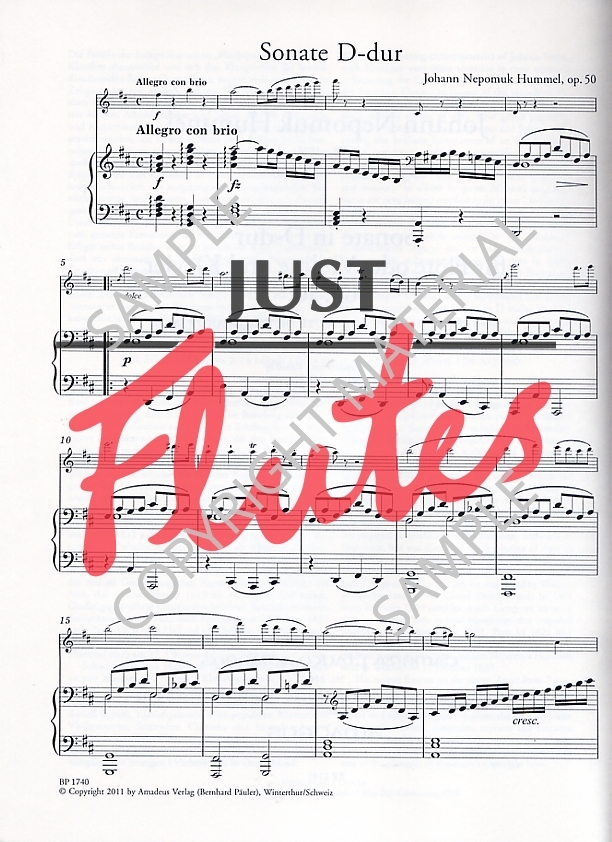Classical flute music is dominated by Mozart but there are other lovely pieces to be found amongst his contemporaries and those coming just after him. Not all are household names but as the music is all delightful, it doesn’t really matter!
Jadin
A good place to start is with Louis Emmanuel Jadin (1786-1853). He is best known for his operas so you are always guaranteed tuneful writing. Perhaps one of the nicest of his works for flute is the Sonata in D major Op 10 No 1, Characterised by simple harmonies and skillful use of both instruments, it presents quite a challenge. A vibrant Allegro is followed by a lovely G minor Andante, whilst the closing 6/8 Rondo brings the work to a happy conclusion. Everyone will enjoy this one!
He is best known for his operas so you are always guaranteed tuneful writing. Perhaps one of the nicest of his works for flute is the Sonata in D major Op 10 No 1, Characterised by simple harmonies and skillful use of both instruments, it presents quite a challenge. A vibrant Allegro is followed by a lovely G minor Andante, whilst the closing 6/8 Rondo brings the work to a happy conclusion. Everyone will enjoy this one!
Graeff
If you’d like to get completely off the beaten track then maybe you should consider the Sonata in G major Op 5 No 1 by Johann Georg Graeff (1762 – 1829). This is part of a the series ‘Virtually Unknown Music’ from Roz Trubcher, and proves that there is plenty of good music to be found in unlikely places! Graeff was a ‘professor of Flute’ who settled in England in 1802. This charming Sonata, again in three movements, is short and relatively simple, so it’s ideal for introducing a younger player to the classical style.

Beethoven
Back on familiar territory, It’s good to be able to include a piece by Ludwig van Beethoven (1770 – 1827) here, even if the Sonata in B flat major is a really early work that can’t be entirely authenticated. Unusually for this period it has four movements, which is great as he didn’t write any other sonatas for us. The publisher’s note describes the work best:
‘There are a number of stylistic grounds which suggest this is an early work by Beethoven: for example, the surprising turn to D major at the beginning of the development, or the lengthy development itself. The Polonaise with it’s trio glows with a Mozartian lightness and grace, the slow movement announces ‘Master of the Adagio’ and the merry variation finale would feel perfectly at home in a serenade by Beethoven.’
The note range is small in this piece and there is plenty of interest in the piano part so it’s ideal for performance by two good students. It’s also a perfect introduction to the world of one of the greats.
Danzi
Beethoven’s contemporaries perhaps rated the flute more than he did and as they were not really quite as innovative, their music is more Mozartian in style. Franz Danzi (1763 – 1826) is probably best known for his wind quintets but his Sonatina for flute and piano in D major is a gem. The three movements are charming . A short, slow D minor introduction leads into an airy 6/8 Allegretto which breezes along cheerfully. The central Larghetto is in a lyrical F major and the work ends with a lively Pollacca back in the home key. The whole piece is quite delightful and would make a very happy start to any recital programme.

Kuhlau
 Another happy recital opener is the Sonata in F major by Friedrich Kuhlau (1786 – 1832). This is music for flute players by a flute player so the melodic line dominates, leaving the piano with a more supportive role. The outer fast movements are bright and breezy and the middle Andante flows along expressively in B flat major. Some of the writing here would benefit from judicious transposition up an octave to increase it’s lightness still further, but it’s original moderate range is ideally suited to less experienced performers. Either way it’s lovely!
Another happy recital opener is the Sonata in F major by Friedrich Kuhlau (1786 – 1832). This is music for flute players by a flute player so the melodic line dominates, leaving the piano with a more supportive role. The outer fast movements are bright and breezy and the middle Andante flows along expressively in B flat major. Some of the writing here would benefit from judicious transposition up an octave to increase it’s lightness still further, but it’s original moderate range is ideally suited to less experienced performers. Either way it’s lovely!
Hummel
Johann Nepomuk Hummel (1778 – 1837) is worth playing just for his name alone! He wrote three flute sonatas, the best of which is perhaps the Flute Sonata in D major Op 50. This is a longer and more substantial work, with an increased range of notes for the flute and change in the role for the piano to equal partner. Although still in the three movement fast, slow, fast form, the first movement is marked Allegro con brio and you will need strong articulation as well as a good technique to convey it’s power. Unusually, the Andante is in the tonic minor, beautifully unsettled and dark, and it leads straight into the closing Rondo Pastorale. Sunny in outlook but anything but straightforward to play, the writing is peppered with more complex rhythms and sudden accents in both parts, and the virtuosity of the writing means that the pair of you will bring the house down at the end!

Schubert
There is always the occasion when we need to play the music of the really famous but, even so, there is still scope for something a little different to entice us away from their more famous pieces. Franz Schubert (1797 – 1828) is noted more for his songs than his flute music and to be able play a Schubert melody is one of music’s great privileges. Six Lieder, fabulous arrangements by Theobald Boehm of some of his most beautiful songs, are a real treat. Ranging from the expressive beauty of Gute Nacht to the lightness of Das Fischermadchen, these songs allow the flute to follow the contours of the voice really well. If you would like to discover more about musical shaping please start here! Worth the cover price for Standchen alone, this is music for a lifetime.
Mozart… Finally!
And finally, Wolfgang Amadeus Mozart (1756 – 1792) really did love the flute! The six delightful Sonatas KV10 – KV15 were written when he was just 6 years old and are just a joy to play. They are full of all the wonderful things we so love about Mozart. Simply written, they have interesting rhythms, imaginative harmonies and most importantly, beautiful melodies. It’s true that they are not without technical issues and some do have movements that perhaps don’t work quite so well. However, you will enjoy playing them all and if ever you need a really sparkling start to a recital look no further than KV 14 in C major – it’s a stunner!
Browse all Classical music for flute and piano at Just Flutes.

Leave a Reply
You must be logged in to post a comment.